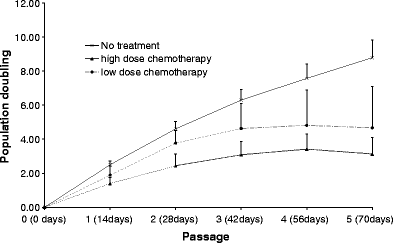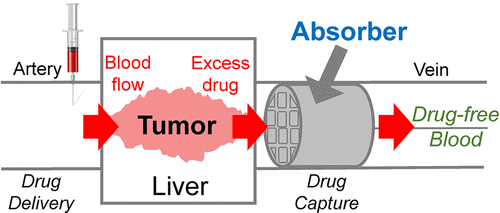https://www.youtube.com/watch?v=fQsYw5brVw8&t=7s
Chemotherapy is a well-known treatment for cancer, using drugs to destroy cancer cells. However, doctors administrate these anticancer drugs with caution because they are also considered poisonous. After cancer treatments, excess drugs can stay in the human body, causing damage to healthy cells, resulting in unwanted toxic side effects. What if there was something that can absorb these drugs like a portable filter?

Various chemotherapy treatments on the growth of mesenchymal stem cells (MSC). MSC is found in bone marrow cells, that contribute to regenerating bone and muscle tissues. Source
Dr. Steven Hetts from the University of California Berkeley initially thought of an idea, to introduce a sponge-like polymer that can absorb excess chemotherapy drugs. Sponges have immensely grown in popularity in the pharmaceutical field, as the metabolites produced hold biologically active natural products. Approximately 5300 different natural products extracted from sponges have shown pharmaceutical properties, such as anticancer and antibacterial active properties.

Schematic diagram of the developed 3D printed porous absorber. Source
In early 2019, he shared this concept among researchers from other American universities, eventually publishing a paper that describes the development of a porous absorbent polymer. The researchers built the lattice structure using 3D printing that allows the blood to circulate through the bloodstream. In addition, they coated the polymer with a polystyrenesulfonate copolymer, essential for absorbing the chemotherapy drug, doxorubicin.

Doxorubicin: a chemotherapy medication used to treat cancer. Source: Wikimedia Commons
This innovative biomedical device showed great promise, as the polymer efficiently absorbed 64±6% of the drug. Even though this was tested on pigs with healthy livers, the understanding of this device allows researchers to focus on improvements. Lattice size, the type of coating, the thickness of the coating, and the number of absorbers are all possible approaches to a more effective drug sponge.
With this in mind, doctors can potentially administrate higher doses of drugs for more aggressive tumors. In addition, modifications to the drug sponge’s coating can absorb other types of powerful chemotherapy drugs. Although testings on humans are not yet approved by the FDA, the drug sponge is a huge step towards minimizing chemotherapy toxic side effects.
